Austria may be one of Europe’s smallest countries, but what it lacks in size, it more than makes up for in its picture-perfect landscape, fairytale-like castles, and illustrious history. This landlocked country, situated in the Alps, is also a renowned winter sports destination, with skiing pursued with vigorous enthusiasm. To a first-time visitor, Austria looks like a country built for emperors and kings.
Here, castles and palaces stand proudly with the majestic Alps as their background. Everything, it seems, stands as evidence of artistic and architectural perfection. The museums are brilliant too, showcasing rare antiques and other remnants from its magnificent past. The River Danube flows elegantly through its northern part, while its scenic beauty and spectacular cities win the hearts of visitors completely. No visit to Europe is complete without visiting Austria. In this blog, we bring you the things to do in Austria that will let you experience the best that this incredible country has to offer.
Hofburg, Vienna

The Hofburg Vienna is an exercise in complete perfection and magnificence. For several centuries, it served as the seat of Austria’s monarchy, the powerful Habsburgs. It’s quite interesting to know that today, the rooms that once housed Emperor Joseph II now host the President, from where he conducts his business.
Hofburg Vienna is spread across 59 acres and consists of 2,600 rooms. Top attractions during your visit to the palace include the Imperial Silver Collection, Sisi Museum, Imperial Apartments, and a series of 19 rooms that were once occupied by Emperor Franz Joseph and his wife.
[Enjoy a fun-filled Austria tour with this package.]
Salzburg Altstadt, Salzburg

Have you ever wanted to visit the birthplace of Wolfgang Amadeus Mozart? If you have not, then Salzburg is the place to come to. Salzburg, one of the top tourist attractions in Austria, is home to Mozart’s birthplace, now transformed into a museum. It was also the residence of prince-bishops, and it was they who recruited distinguished artists and architects to beautify their churches, monasteries, and residences.
The medieval and Baroque burger houses provide wonderful opportunities for exploration. The main attractions are St. Peter’s Abbey and its church, Hohensalzburg Castle, and the cemetery with its catacombs.
The Spanish Riding School, Vienna
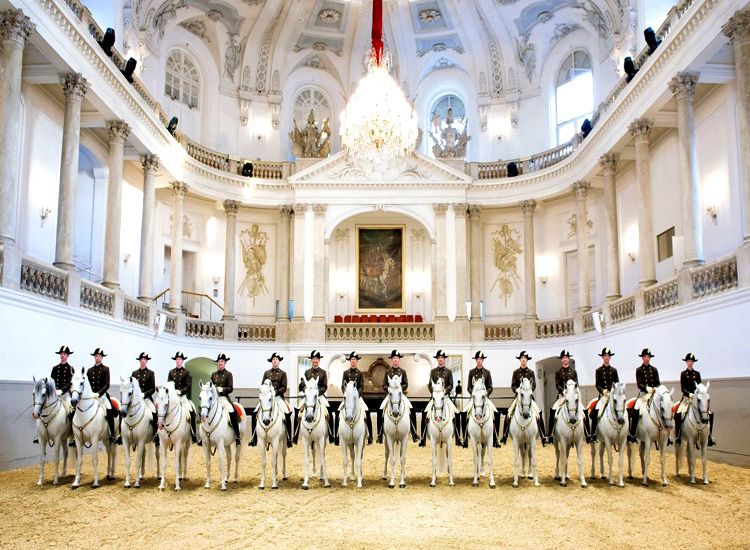
How would you like to come across a place where the classical style of riding horses is still practiced? Visit The Spanish Riding School, a place that traces its history to Emperor Maximillian II. It was the same man who brought the renowned Lipizzaner horses into Austria in 1562.
Once here, you should visit the equestrian displays in the Baroque Winter Riding School. The school was built in 1735 to enable the nobility to demonstrate their riding prowess. However, you should remember that the tickets for these performances are booked in advance, and you might need to do the same.
Schönbrunn Palace, Vienna

The Schönbrunn Palace, a UNESCO World Heritage Site, is both exquisite and massive and is a specimen of architectural brilliance. Located in Vienna, it once served as the imperial summer residence, and visiting it is certainly one of the top things to do in Austria. You can choose between two kinds of tours upon visiting this palace, the Imperial Tour and the Grand Tour. During the course of the Imperial tour, you are taken on a round of the rooms and acquainted with the different eras of monarchy as well as those living within it.
The Grand Tour covers all the rooms along with the 18th-century state rooms. Other attractions of the tour include the Royal Apartments, Great Gallery, ornate ceiling paintings, Million Room, Maria Theresa’s salon, and the Hall of Mirrors.
[Explore the best of Europe with this package.]
Hofburg and Hofkirche, Innsbruck

If you are fascinated with the Renaissance period, then Hofburg and Hofkirche will arouse your interest. Like Italy, Germany too had its Renaissance. Hogburg was the palace of Emperor Maximilian I, whose rule existed from the late 1400s to the early 1500s. However, it was remodeled by Empress Maria Theresa in the 18th century Baroque and Rococo style.
A tour of the Hofburg includes the royal apartments, the Giant Hall (Riesensaal), and the painted ceilings. The Hofkirche, or Court Church, contains the Tomb of Emperor Maximilian I. A masterpiece of the German Renaissance period, it enchants onlookers with its 24 marble reliefs which depict several events in the Emperor’s life. Other attractions are 23 bronze states of saints from the Habsburg family along with 20 bronze busts of Roman Emperors.
Melk Abbey, Melk

Melk Abbey in Melk represents grandeur and excellence on another level. As a tourist, all you can do is stare and admire this work of grandeur. Spread around seven courtyards, it’s perched on a rocky outcrop overlooking the River Danube. There are many avenues for exploration here including the remains of Austria’s first ruling family, the tomb of Saint Coloman of Stockerau, the House of Babenberg, and the 196 m-long Imperial Corridor containing exhibits of Austria’s rulers.
Hallstatt and the Dachstein Salzkammergut

Among the many things to do in Austria is visit the Hallstatt, a beautiful small town in Austria. This place serves as the base for exploring the Dachstein Salzkammergut region, which is also a UNESCO World Heritage Site. The Baroque style of architecture is evidence of Hallstatt’s prosperity.
One of the tourist attractions is the underground salt lake in the Hornerwerk cavern and the Dachstein Caves, one of the most impressive cave networks in Europe. Other places which are popular attractions include the Giant Ice Cave and Mammoth Cave. You can also enjoy magnificent views of the Alps from the 5 Fingers viewing platform, a metal structure hanging over a 400m drop.
[Discover Prague, Vienna & Budapest together with this package.]
Skiing at Kitzbühel and Kitzbüheler Horn

The famous resort town of Kitzbühel is a haven for ski enthusiasts and offers 170km of skiing slopes. Skiers can also stop for traditional Alpine snacks and drinks along the way. Kitzbühel also hosts the annual Hahnenkamm, the most challenging of all downhill ski races. However, it doesn’t matter if you aren’t a professional skier or an expert. There is plenty of terrain for all skill levels in the three skiing areas.
Kitzbüheler Horn, stretching to almost 1998m, is a favorite skiing destination during the winters and a favorite mountain hiking destination during the summers. You can also choose to enjoy a cable car ride via the Pletzeralm that takes you to the summit. On the summit is a beautiful mountaintop home called Gipfelhaus, which consists of a restaurant, chapel, and an Alpine garden.
Medieval Burg Hochosterwitz
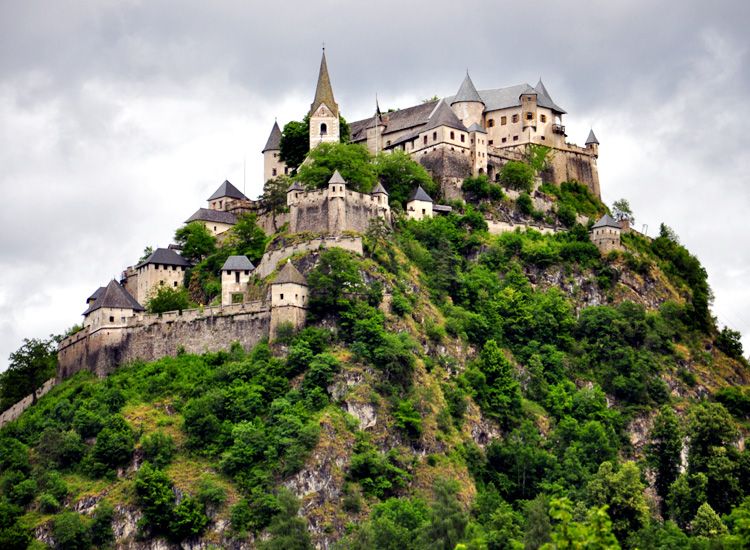
Burg Hochosterwitz is one of Austria’s oldest castles. It’s located to the east of St. Veit on a crag which juts out about 160m above the valley. The castle was captured by the Khevenhüllers in 860 AD.
The road to the castle, Burgweg, is quite steep and makes its way through 14 defensive gates to the immaculate courtyard where the chapel is. Adorned with beautiful paintings on its wall and ceiling paintings, it makes for a very impressive sight. The church, with its altar dating back to 1729, is also a fabulous sight.
The Grossglockner Road to Franz-Josefs-Höhe
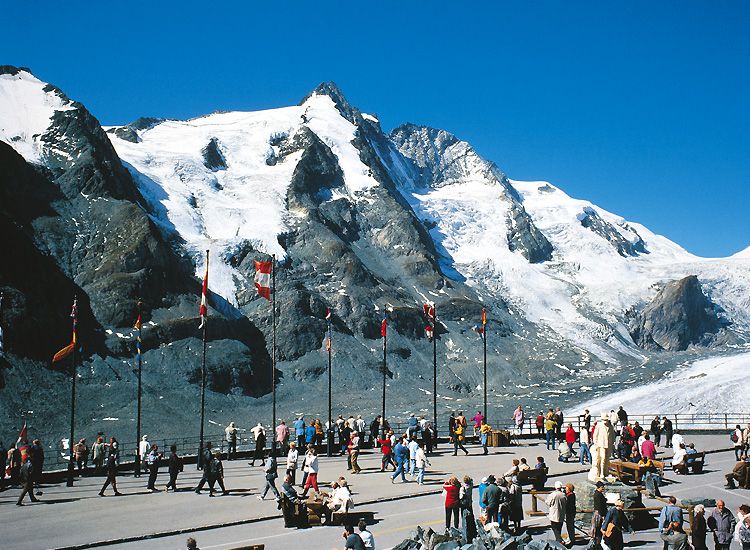
The Grossglockner Hochalpenstrasse is an amazingly beautiful mountain road in Europe, and one of the best things to do in Austria is to take a ride through it. It was constructed between 1930 and 1935. While it no longer holds importance as a route through the Alps, it’s still loved as an incredible highway through the High Tauern, the highest mountain massif in Austria.
The road makes its way for almost 22km at an altitude of more than 2000m, twisting and turning up to the summit tunnel on Hochtor Mountain at 2506m. It then descends into the valley on the far side.
Stephen’s Cathedral in Vienna

St. Stephen’s Cathedral in Vienna is one of the grandest Gothic structures in Austria. It is also a prominent landmark inside Vienna’s old city center. The church existed in the 12th century as a Romanesque church before being replaced in the 13th century by a late-Romanesque church, of which the massive gate and Heathen Towers survive.
Gothic reconstruction in the 14th century resulted in the addition of the choir and chapels of St. Eligius, St. Tirna, and St. Catherine. The views from the top are simply captivating. You can either choose to climb the 343 steps or take the elevator. Special attractions are the 14th-century catacombs and the cathedral treasury.
Klosterneuburg Abbey and the Verdun Altar
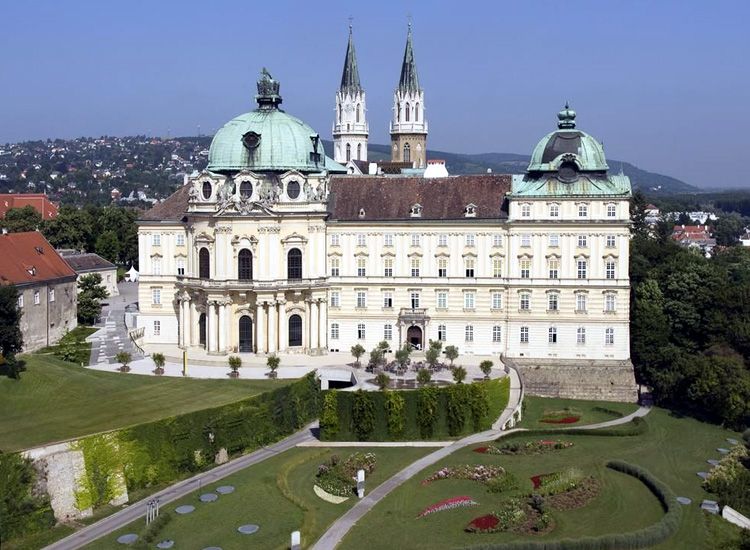
To reach Verdun Altar, you will have to take a flight of steps in the Klosterneuburg Abbey that leads to the 12th-century St. Leopold’s Chapel. It’s here that Leopold III is buried. The altar in the chapel consists of 51 panels which depict Biblical scenes by Nicholas of Verdun from around 1181.
The Verdun Altar is undoubtedly one of the most impressive artworks of the Middle Ages. It’s extraordinary to see how the altar, even after so many years, shines with the same brilliance as it would have many years ago.
Krimml Ache Waterfalls

One of the best sights you will come across in Austria is the Krimml Ache Waterfalls. Falling from a height of almost 380m in three enormous cascades, they make for a beautiful sight. If you are an avid hiker, then Krimml is the place to be in. There are various trails that lead to the waterfalls, and each of them has its own beauty.
One of the more famous trails are those that start from the Schettbrücke and continues to the marvelous Krimmler Tauernhaus. From this point on, climbers can try the 2,911m high Glockenkarkopf on the Italian frontier.
Eisriesenwelt
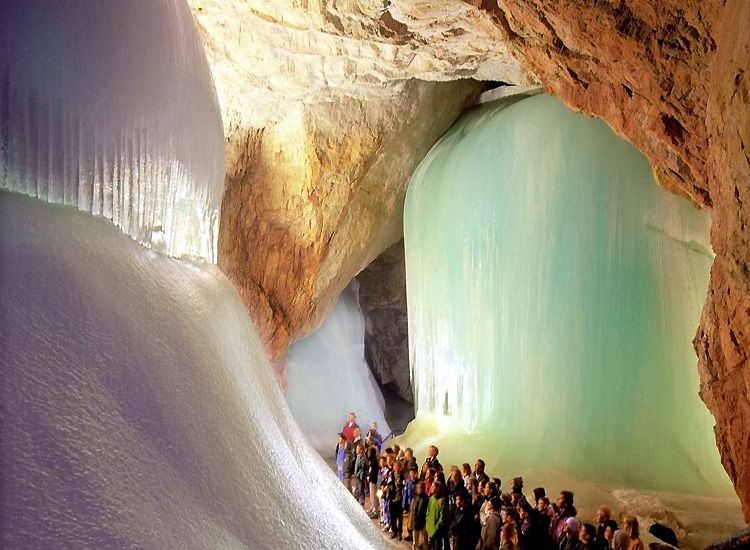
Eisriesenwelt, the largest ice cave in the world, is located on the western edge of the Tennengebirge. You may have explored various kinds of caves before, but what awaits you here will leave you completely surprised. The caves, which cover almost 30,000 sq.m, were carved by an underground river.
Although they were discovered in 1879, they were opened to the public in 1912. To date, almost 45km of the underground network has been discovered. After making your way along the Great Ice Wall, you will come across the magnificent Hymir Hall which consists of amazing ice formations and icicles. Conducted tours will take you almost two hours, while the trip to and from will take a few hours.
Festung Hohensalzburg
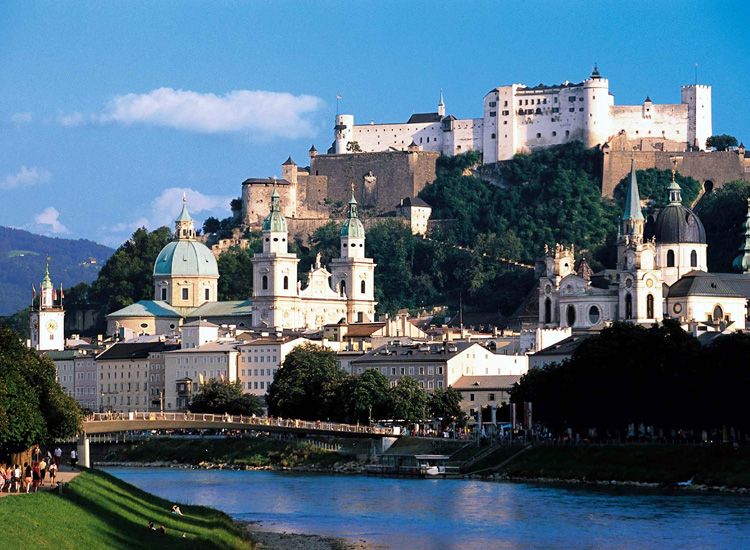
Hohensalzburg Fortress stands proudly atop the Festungsberg and dominates the skyline of Salzburg. One of the biggest and well-maintained castles in Central Europe, it is visited by millions of tourists annually. The fortress is open throughout the year and visitors have the option of reaching it by foot or riding the Festungsbahn, a cable-operated car operating within the fortress.
The highlights of the fortress include the medieval princely chambers, the fortress museum, and a fascinating display of objects once used by the prince-archbishops in their royal lifestyle. Salzburg Fortress Concerts are also conducted at the 900-year-old fortress.
Schloss Hellbrunn
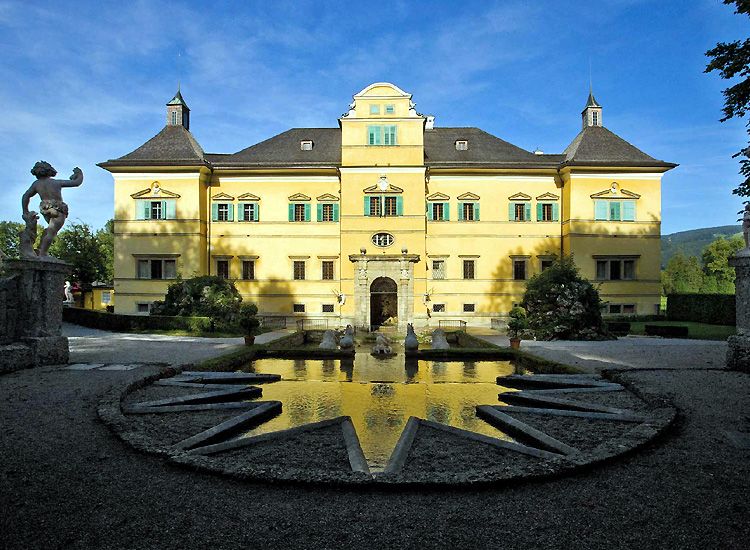
Prince-Archbishop Markus Sittikus had a dream: to build a palace that was simply unbelievable. He commissioned the construction of Hellbrunn in 1613. Indeed, the palace, the park, and the trick fountains are the pride of Salzburg.
The first sight that catches your attention here is the trick fountains with their water automats, grottoes, fountains, and other water-related tricks. Surprises abound in this palace. Hellbrunn was originally built as a pleasure palace and sure enough, people who visit it today have the utmost fun and pleasure.
Globe Museum

One of the most interesting places to visit in Austria is the Globe Museum, situated in the Austrian National Library. It’s home to almost 250 exhibits which contain almost 750 objects in the exhibition area. The variety of globes exhibited here include terrestrial and celestial globes, along with globes of the moon and other planets.
The museum also houses several astronomical instruments. Visiting the museum gives you an opportunity to learn about the history of globes and other issues related to cultural history.
Green Lake
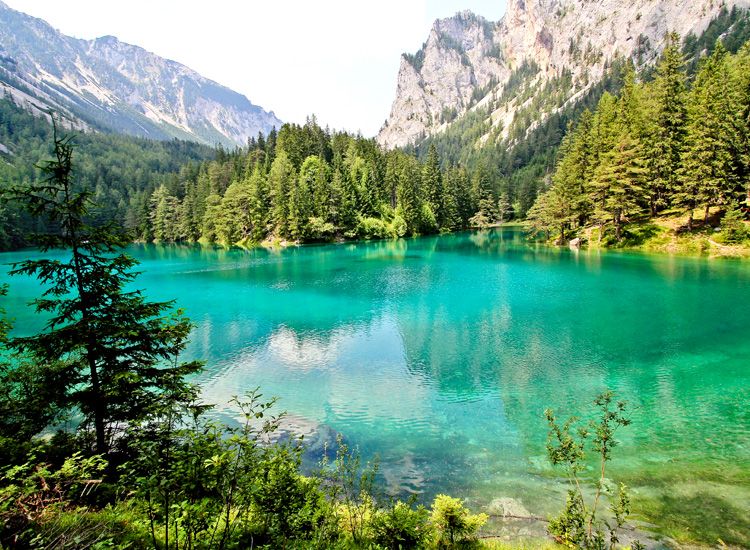
Grüner See, also known as Green Lake, is located in the Hochschwab Mountains of Styria, Austria, in close proximity to the village of Tragöess. It’s one of the most picturesque places to visit in Austria and is visited by locals for hiking and relaxing on the benches till mid-June.
After that, the trails and benches are submerged under 36ft of water. With the rise of temperatures in spring, the snow from the surrounding mountains melts into the basin, thereby causing a drastic increase in the water level. Its emerald color lends it a magical touch, and it is another example of the fascinating faces of nature.
The Lost Garden of Schloss Schonbrunn

The lost garden of Schloss Schonbrunn in Vienna is a gorgeous former hunting lodge and a summer palace of the Habsburgs. The lost garden is a topiary maze. The original maze was demolished in 1892 and rebuilt in 1999 while retaining the design of the original maze from 1686. Navigating the maze is quite a challenging and exciting task.




Great Blog you have shared with us and the images on your blog are Awesome.
Hi Ellen,
Thank you for your kind words. I am delighted that you liked my post and found it to be so interesting. Stay updated for such articles in the future.